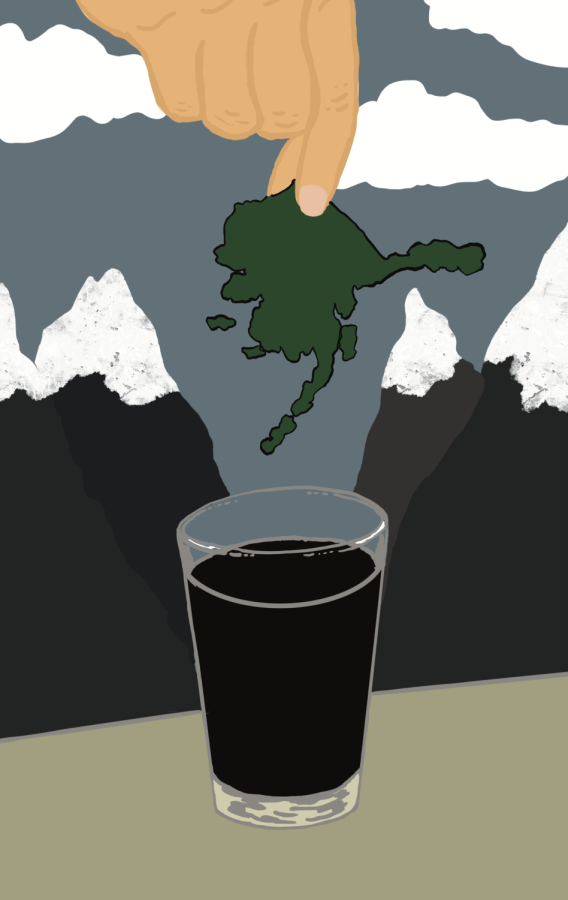Controversy surrounds the Willow Project in AK
This year, an improved version of the project was passed by Gleason, containing only three drill sites as opposed to the initial five.
April 20, 2023
On March 13, the Biden administration approved the Willow Project, which will allow ConocoPhillips, a Houston-based petroleum refinery, to drill for oil on public land in Alaska. The project would be located inside the National Petroleum Reserve on Alaska’s North Slope—the biggest undeveloped area of public land in the country that also holds up to 600 million barrels of oil.
While the project was originally pitched in 2020 and approved by the Trump administration, Alaskan Federal Judge Sharon Gleason overturned the decision, claiming that the environmental evaluation was flawed and needed to be revised. This year, an improved version of the project was passed by Gleason, containing only three drill sites as opposed to the initial five.
Although the new proposal was scaled down, the potential environmental effects of the project have been the source of controversy in recent months. The City of Edina’s Sustainability Manager, Grace Hancock, summarized her three main issues with the project. “The [Intergovernmental Panel on Climate Change] report, [which was] just released, outlines how important it is not to start new fossil fuel projects; any new drilling undermines the world’s ability to address climate change,” Hancock said.
The IPCC’s AR6 Synthesis report for 2023 states that “limiting human-caused global warming requires net zero CO2 emissions,” which also directly correlates with the United Nations’ sustainability goals. “Global carbon dioxide emissions need to be reduced by 45 percent by 2030 from 2010 levels and reach net-zero emissions by 2050,” the UN said in their 13th sustainability goal which was released 2020. However, the Willow Project is estimated to release the equivalent of 277 million tons of carbon dioxide into the atmosphere over the next 30 years, which counters any effort by environmentalists to reduce fossil fuels.
“The project is on federal public land, which should be used for the public good, including the good of the plants and animals that call that area home; this project is not in the interest of the public good,” Hancock said. The destruction of habitats that belong to native species, the well being of arctic wildlife, and the ecosystem that many Indigenous Alaskans rely on has been a major concern amongst conservation groups like Defenders of Wildlife.
“The project is in an area that is already suffering from climate change more quickly and more intensely than other parts of the world,” Hancock said. “Communities in Alaska are already faced with the question of migrating to safer areas due to climate change, [even if it means] losing access to traditional cultural grounds.” This year, Alaska had its warmest December on record with a statewide average temperature of 19.4 degrees Fahrenheit, 15.6 degrees Fahrenheit above the 20th century average.
Although the Willow Project could negatively impact the environment, many Alaskans are in favor of the project. It is projected to deliver $8 billion to $17 billion back to the federal government and is estimated to produce 180,000 barrels of oil per day at its peak, which would decrease American dependence on foreign energy supplies. Also, the project would create over 2,500 construction jobs and around 300 long-term jobs which would further help the economy. “[The creation of jobs] will be revenue and income to a state that desperately needs it…We’re seeing a net outmigration, unlike any state in the country, and it is because it’s directly tied to the state of our economy,” said Alaskan Senator Lisa Murkowski on the Senate Floor on March 16.
In addition to environmental and economic controversy, there has been political controversy on whether passing the project made President Joe Biden incongruent with the platform he ran on. Olivia Machart, leader of Edina High School’s environmental club, Project Earth, shares her perspective. “I think it contradicted the environmental views Biden campaigned on and was elected based off of,” Machart said. During Joe Biden’s 2020 presidential campaign, he promised to end oil and gas drilling on public land and waters. “No more drilling on federal lands, period,” Biden said.
Since the project’s approval, the Biden administration has received lots of pushback from the public and environmentalist groups. A Change.org petition asking the administration to stop the Willow Project has received over five million signatures, and #StopWillow is trending on TikTok with over 390.5 million views. Although the public is trying to take action, Hancock believes there are better ways to incite change. “Contacting elected officials is effective—calling our Minnesota Senators and House members who have said they are committed to climate action and holding them accountable for this decision,” Hancock said. “Also, public demonstrations are effective. I recall Greta Thunberg’s Friday climate strikes or participating in collective action like joining the Sunrise Movement to build power larger than any one individual.”
The future of the Willow Project is unclear as environmental groups such as Earthjustice have gathered to file a complaint against the project, attempting to block any development. If they are successful in obtaining an injunction before the end of winter (the only period when it is possible to start work on the project), construction could be delayed for at least a year. Because the project must be completed before oil can be produced, it may take years for oil to reach the market.
This piece was originally published in Zephyrus’ print edition on April 20.



Moose Johnson • Apr 21, 2023 at 11:35 am
Only in liberal minds…Alaska does resource development cleaner and more environmentally consciously than ANYWHERE else on our planet. Alaska was purchased and constituted for mineral resource development, but liberals choose to destroy our state by banning our purpose of statehood.